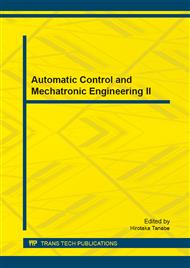p.631
p.636
p.642
p.647
p.651
p.658
p.666
p.672
p.677
Autothermal Reforming of Ethanol for Hydrogen Production: Steady State Modeling
Abstract:
As increasing hydrogen demand for fuel cell application is expected in the near future, the efficient production of hydrogen is vital enabling technology for commercialization of fuel cell for residences and automobiles. Among different technologies of hydrogen production, autothermal reforming is considered to be thermally self-sustaining that the external heat source is not required. In this work, a steady state modeling of autothermal reforming of ethanol for hydrogen production has been performed. Because the operating condition at adiabatic temperature is designed for autothermal reformer, the estimated function of adiabatic temperature as function of steam-to-carbon (S:C) and air-to-carbon (A:C) molar ratios can be determined. At autothermal condition, the effect of S:C and A:C ratios on the product distributions of hydrogen rich stream is thermodynamically investigated. At fixed reactor pressure of 1 bar and preheat temperature of 200 °C, the favorable operating condition for the autothermal reforming of ethanol is found to be a S:C ratio of 2.0 and an A:C ratio of 1.75 at adiabatic temperature of 639 °C.
Info:
Periodical:
Pages:
651-657
Citation:
Online since:
September 2013
Authors:
Price:
Сopyright:
© 2013 Trans Tech Publications Ltd. All Rights Reserved
Share:
Citation:


